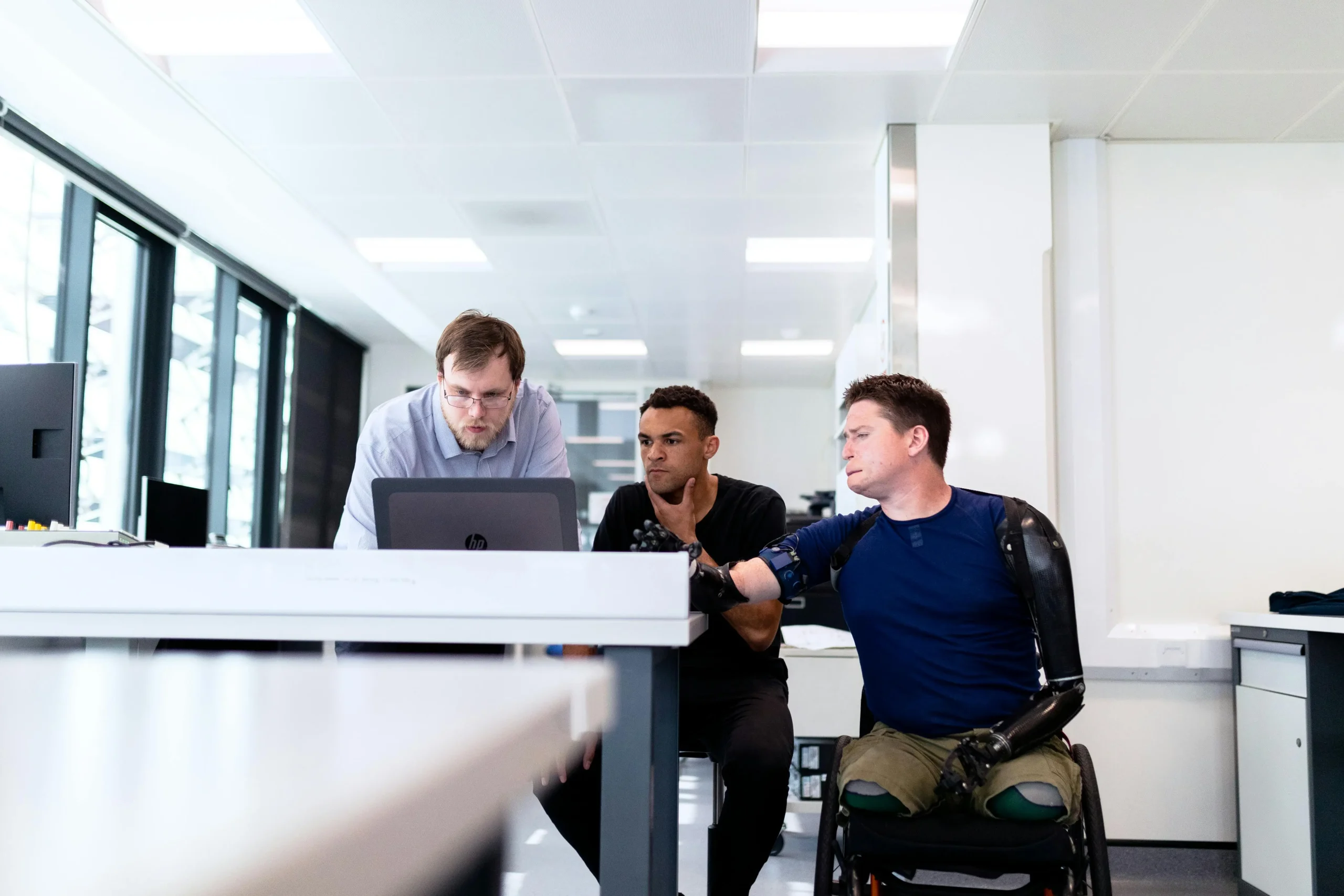Accessibility in the workplace is not just a legal or ethical consideration—it’s a powerful tool for solving one of the biggest challenges facing businesses today: diversity. By embracing accessible employment practices, companies can unlock a wealth of untapped talent and create a more inclusive, productive workforce. But what does accessible employment really mean, and why should employers care?
What is Accessible Employment?
Accessible employment refers to creating a work environment where everyone, including individuals with disabilities, has the opportunity to contribute, thrive, and succeed. This involves adapting workplaces—both physical and digital—to accommodate diverse needs, fostering inclusive hiring practices, and providing equal opportunities for growth.
Why It’s Critical for Workplace Diversity
Diversity is often seen as a buzzword, but in reality, it’s a game-changer. Accessible employment is crucial for bringing people from all walks of life into the workforce, ensuring that individuals with disabilities have equal access to job opportunities. This not only promotes fairness but also brings a richness of perspectives that can drive innovation and creativity.
The Benefits of Embracing Accessibility
Accessible employment benefits everyone, from the employee to the employer. For businesses, it’s about creating a dynamic and diverse workforce that reflects the world’s true talent. For employees, it’s about having a fair shot at success—regardless of physical or mental barriers.
The Impact of Inclusive Employment on Society
On a societal level, accessible employment fosters a more equitable environment, helping reduce unemployment rates among people with disabilities and breaking down long-standing societal barriers.
Why Accessible Employment Matters
Breaking Down Barriers for Disabled Individuals accessible employment
Disabled individuals have often been marginalized in the job market due to physical, technological, and social barriers. From inaccessible office buildings to job listings that exclude certain candidates, these barriers can make it incredibly difficult for qualified candidates to find meaningful work.
Common Obstacles in accessible employment Traditional Workplaces
In traditional workplaces, many people with disabilities face challenges that others may never even consider. This includes physical barriers, like non-compliant elevators, as well as digital obstacles, such as websites or software that aren’t screen reader-friendly.
The Importance of Equal Opportunities accessible employment
Equal opportunities mean that no one should be excluded from a job simply because of a disability. Accessible employment practices focus on leveling the playing field so that everyone, regardless of ability, has an equal chance to succeed.
The Role of Accessibility in Supporting Career Growth accessible employment
Accessibility isn’t just about getting people hired—it’s also about supporting them in their roles. By providing the right tools and accommodations, employers can help disabled employees reach their full potential and achieve career growth.
The Business Case for Accessible Employment
Unlocking Untapped Talent Pools
In a global talent shortage, accessible employment practices are more than just a way to do the right thing—they are a strategic advantage. By welcoming disabled workers into the fold, employers gain access to a diverse talent pool that many have been overlooking.
Increased Productivity and Innovation
Companies that embrace accessible employment often see increased productivity. Diverse teams bring diverse solutions, leading to innovation and growth. A workplace that is designed for everyone is a workplace where everyone thrives.
How to Build an Accessible Workplace
Creating Inclusive Hiring Practices to accessible employment
To ensure accessibility, it all starts with inclusive hiring practices. This means using job descriptions that are clear and accessible to people with disabilities, as well as providing interview accommodations. Employers should offer flexibility and be open to adjustments that make it easier for disabled individuals to demonstrate their qualifications.
Accessibility in accessible employment Job Listings
Job listings should be written in a way that ensures candidates with disabilities feel welcome to apply. Instead of focusing on limitations, emphasize the skills and qualifications needed for the role. For example, mention the availability of accommodations during the interview process.
Interviewing and Onboarding Inclusively
During interviews, employers can accommodate candidates by offering flexible interview formats (e.g., remote interviews, extended interview times) and ensuring that their interviewing spaces are accessible.
Real-Life Success Stories of Accessible Employment
Companies Leading the Way
Case Study 1: A Technology Company’s Inclusive Hiring Practices
One major tech company saw a dramatic increase in innovation after introducing accessible hiring practices. By creating clear pathways for disabled candidates to apply and thrive, they tapped into a unique pool of problem-solvers who had previously been overlooked.
Case Study 2: How a Retail Brand Transformed Its Workforce with Accessibility
A popular retail brand implemented accessibility changes by upgrading their stores and creating flexible work schedules. The result? Increased employee satisfaction, decreased turnover, and better customer experiences.
Legal and Ethical Considerations in Accessible Employment
Understanding Accessibility Laws
Accessibility laws like the Americans with Disabilities Act (ADA) in the U.S. mandate that businesses must provide equal access to employment for individuals with disabilities. Employers must comply with these regulations, but more importantly, they should view them as an opportunity to lead change and improve their workplaces.
The Ethical Imperative of Inclusive Employment
It’s not just about legal compliance; it’s about doing the right thing. By fostering accessible employment, businesses contribute to a more equitable and just society.
Challenges in Implementing Accessible Employment
Overcoming Resistance to Change
One of the biggest challenges to implementing accessible employment practices is resistance to change. Some employers may feel overwhelmed by the thought of modifying their workplace or fear the associated costs.
Why Employers Hesitate to Adapt
Common misconceptions, such as the belief that making workplaces accessible is prohibitively expensive, often deter employers from taking action.
Overcoming Accessibility Obstacles
Technological Solutions for Accessibility
Assistive technologies such as screen readers, speech-to-text software, and specialized keyboards can help bridge the accessibility gap. Employers should invest in these technologies to ensure that employees have the tools they need to succeed.
Promoting Awareness and Education
Employers should educate their teams on the importance of accessibility and diversity. Awareness training can help break down prejudices and foster a culture of inclusion.
The Future of Accessible Employment
Trends Shaping Accessible Employment
Remote work is a game-changer for accessible employment. It allows individuals with disabilities to work in an environment tailored to their needs, reducing the physical barriers of traditional office spaces.
The Role of Artificial Intelligence in Accessibility
AI is revolutionizing accessibility, from predictive text to voice assistants that help employees navigate their tasks. The future of accessible employment is tied to these technological advancements.
Conclusion: Why Accessible Employment Is the Future of Work
Accessible employment isn’t just a trend—it’s the future of work. By embracing inclusivity, employers can create stronger, more dynamic teams while contributing to a more equitable society. The benefits are clear: increased innovation, greater talent pools, and a stronger workforce.
FAQs
What is accessible employment?
Accessible employment ensures that people with disabilities can apply for, obtain, and thrive in a workplace through accommodations and inclusive practices.
Why is accessibility important in the workplace?
Accessibility helps create equal opportunities, improves workplace diversity, and taps into untapped talent pools, benefiting both employees and employers.
How can businesses make their hiring processes more inclusive?
Businesses can write clear job descriptions, offer flexible interview accommodations, and ensure that application systems are accessible to people with disabilities.
What are some common barriers disabled individuals face in workplaces?
Barriers include inaccessible buildings, outdated technology, lack of accommodations, and discrimination in hiring practices.
How does accessible employment benefit businesses?
It fosters a diverse and inclusive workforce, enhances innovation, and improves employee satisfaction, which can increase productivity.
What are some examples of workplace accommodations?
Examples include adaptive technology, flexible work hours, and modified physical spaces like wheelchair ramps or accessible restrooms.
Are there legal requirements for accessible employment?
Yes, in many countries, including the U.S. under the ADA (Americans with Disabilities Act), employers must provide equal access and accommodations for employees with disabilities.
How can technology assist in accessible employment?
Technologies like screen readers, speech-to-text software, and adaptive keyboards help employees with disabilities perform tasks efficiently.
What are the costs of making a workplace accessible?
The costs can vary depending on the accommodations needed, but many solutions are affordable, and the long-term benefits far outweigh the investment.
How can employees contribute to an accessible workplace?
Employees can foster an inclusive environment by being respectful, educating themselves about accessibility, and advocating for necessary accommodations.
Internal Links:
- Top 10 Job Search Platforms Tailored for Disabled Job Seekers
- Future-Proof Your Job Search: Confidence Tips for Disabled Professionals













